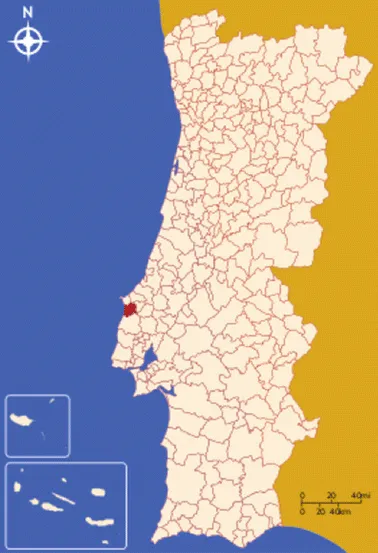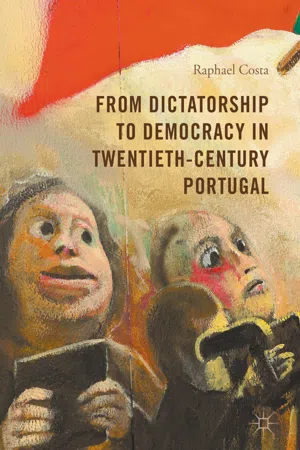On April 24, 1974 readers of Republicá, one of Portugal’s national newspapers, read a seemingly innocuous note in the paper’s review section. The anonymous appraisal explained that Radio Renascença’s program, Limite, a late-night show on the popular radio station, “had been improving for some weeks. The quality of its news items and its choice of music make Limite obligatory listening.” 1 The program’s host, José Vasconcelos, had been waiting to read this particular review of his show. It was his signal to recite, on air, the lyrics of José (Zeca) Afonso’s popular, and censored, protest song, Grândola, Vila Morena.
Shortly after midnight on April 25, Limite’s host repeated the lines in Zeca Afonso’s anthem. Portuguese listeners might have been curious, hearing the lyrics to a government-suppressed song that spoke of fraternity, equality and popular rule. Junior officers in the clandestine Armed Forces Movement (MFA) on the other hand, recognized the lyrics as a call to arms. The MFA, made up of disaffected veterans of Portugal’s colonial wars in Africa (1961–74), had been plotting to overthrow Europe’s oldest right-wing dictatorship, the Estado Novo, whose institutional origins are found in the military dictatorship that overthrew Portugal’s ailing republic in 1926. Zeca’s lyrics were their signal. In the early hours of April 25, 1974, the MFA occupied government offices in Lisbon in a coup whose goals were to overthrow Portugal’s dictatorship and democratize, develop and decolonize Portugal. 2 In an instant, 48 years of military dictatorship (1926–74), 42 of them under António Oliveira Salazar and Marcelo Caetano’s Estado Novo (1932–1974), had passed. Portugal became a democracy and April 25, 1974, many argue, set the country on a path that would see it emerge as a modern Western European country. 3
April 25, 1974 is indeed a watershed moment in the history of modern Portugal. Until then, Portugal’s modern period had been marked by political rupture. Portugal’s nineteenth century in urban centres, like much of Europe, was marked by the rise of liberalism and the friction it brought as it butted against absolute monarchy. By the end of the 1800s, after a civil war in the 1830s and decades of back-and-forth machinations in Lisbon, Portugal had settled into a constitutional monarchy supported by the military. However, after 1890 the republicanism that was prevalent across Europe challenged Portugal’s political compromise. 4 Republicanism eventually won out in Portugal in October 1910 in a coup d’état unopposed by the military. Portugal’s First Republic (1910–1926) was a departure from nineteenth-century Portugal that exposed the population to many of the ideas discussed in this book: it introduced civic freedoms and mobilized the population with more representative government; it practiced ideas of social justice via reform in taxes, education, social welfare, agriculture, and the military, and expanded public works; and it unleashed society, permanently weakening the Church and other monarchical allies. 5 The Republic’s 16 years were rife with disruption, exacerbated by the First World War that included experiments with a military and presidential dictatorship under Sidónio Pais. These ended in 1926 with the Coup of May 28, which brought to power the military dictatorship that would welcome Salazar as its technocratic savior from financial ruin in 1928. 6
After 1926, Salazar’s Estado Novo calmed Portugal’s politics. The repressive, Catholic, authoritarian dictatorship limited access to the halls of power in Lisbon and clung to Portugal’s remaining imperial holdings. From the 1930s to 1961, the Estado Novo rather comfortably maintained power over the Portuguese Empire. However, the seeds of the dictatorship’s demise can be found in its intransigence vis-à-vis the empire: as mentioned, it was the officers, disenchanted by their experience in the Portuguese colonial wars in the 1960s and early 1970s, who would bring the end of the dictatorship in 1974.
25 de Abril has been celebrated in Portugal, both academically and popularly, as the break with dictatorship and a triumph of social democracy over neo-dictatorial and communist forces that tried to establish their own regimes in the aftermath of 25 de Abril. 7 Similarly, the end of Portugal’s Estado Novo on 25 de Abril, has been celebrated as a rupture in world history. In some interpretations of the spread of democracy throughout the world, the Revolution began a wave of democratization that would see dictatorship end in other Southern and Eastern European, Asian, African and South American countries. 8
However, like in other so-called third-wave democratizations, such interpretations overlook local and particular circumstances in Portugal’s political, economic, social and cultural development in the years prior to 1974. 9 Portugal’s modernization—this term refers to an economic and political process in the discussion that follows, which both motivated and was influenced by social and cultural changes—saw the small Iberian country on Europe’s extreme western fringe change fundamentally in countless ways and move closer to the mainstream of Europe and its culture. In order to explore the myriad of changes in Portugal, the discussion that follows will focus on two larger processes and their interrelation. It will flesh out an understanding of how Portuguese society changed from a country whose dictatorial government and economic backwardness were tolerated in the Cold War, to a Western social democracy with a respectable standard of living.
First, Portugal became a democracy in 1974, cementing the democratization of Portuguese government and its institutions by 1976 with the country’s emergence from the revolutionary period as a European social democracy. The Estado Novo fell overnight on April 25, 1974. However, as this book argues, this seemingly sudden democratization was not so sudden when considered in the light of the experiences of the Portuguese before and after 1974. In important ways, the Estado Novo had already introduced its subjects to democratic practices as it mobilized support for various development projects in the 1960s, thereby launching a modest democratization before 1974.
The second area upon which my argument focuses considers the changes in Portugal’s physical and economic infrastructure that occurred concurrently with its democratization in the last half of the twentieth century. At the macro level, Portugal’s economy shifted since the late 1950s, causing a revolution in the country’s infrastructure. Indeed, Portugal’s economy, by design of economic policy, turned from reliance upon its empire to reliance upon European markets and investment. In addition, Portugal’s economy has come to rely upon the tertiary sector as the largest contributor to national Gross Domestic Product (GDP). 10 Welcoming new investment and relying upon the service sector has meant that Portugal’s infrastructure (roads, electricity, running water and service points) has had to improve exponentially since the 1960s. It has also meant that government support for long-relied-upon economic sectors, like agriculture, needed to be supplemented by new methods and techniques offered by the private sector. Indeed, infrastructure and struggling farmers occasionally required developmental support that the Estado Novo’s bureaucracy could not provide. This left a vacuum in civic responsibility which Portugal’s population and businesses filled until administrative services were advanced enough to lead development without citizen involvement.
In investigating the relationship between changes in Portugal’s politics and urban landscape there are, necessarily, certain debates with which any discussion must engage. First, urban, economic and political changes over the last half-century in Portugal have contributed to a process of modernization. Modernization and modernization theory, along with its meanings and consequences, have been maddeningly difficult for scholars to pin down. This work reinforces some interpretations of modernization and offers a list of societal characteristics in which changes can spill over and drive development in other political, economic, or cultural arenas. Specifically, the two elements of modernization that this book considers are the renovation of urban and economic infrastructure, and a society’s politics. The second debate, therefore, concerns the relative influence of changes in Portugal and Lourinhã’s landscapes on the power dynamics in the civic sphere. Indeed, as Lourinhã’s landscape necessarily developed with Portugal’s modernization, the relationship between public and private actors fundamentally shifted. Finally, important shifts in civic relations underlay Portugal’s democratization, calling into question some interpretations of democratization and the role of ‘ordinary citizens’ along with the importance of Portugal’s 1974 revolution in the fall of the Estado Novo.
In order to engage in these debates, the following discussion explores how Portugal’s development in infrastructure and key economic sectors contributed to the democratization of society by focusing on the fundamental transformation of a single Portuguese town since 1966. What follows is a case study of Lourinhã, Portugal.
Case studies have been both lauded as a means to provide a deep understanding of how macro processes play out at micro levels, and questioned as so narrowly focused that conclusions drawn cannot be applied beyond the case in question. However, any work, inevitably, is the result of choices made by the researcher, who decides both thematic and geographic foci. Social scientists work to explain experiences and the relationships that make up those experiences. They do so by breaking out a set of material pertinent to the focus of the study.
11 As such, case studies ground broader concepts and processes—democratization, modernization and economic development, in this case—in close-at-hand settings. In addition, they also permit holistic studies of processes across time, allowing the researcher to see various processes play out in tandem.
12 For historians, the case study is rarely used, as comparative approaches are often favoured, unless the scope is broad enough—an urban center, for example—to satisfy demands for far-reaching applicability. 13 However, this work is inspired by strong case studies often used by historians. Indeed, the seed for the dissertation this work is based upon germinated with William Sheridan Allen’s The Nazi Seizure of Power: the Experience of a Single German Town, 1922–1945. In it, Allen reconstructs how the German National Socialists under Adolf Hitler were able to win electoral power; he demonstrates their tactics, and how they interacted with ongoing relationships, in a small town. 14 In the Portuguese context, Charles Downs’ Revolution at the Grassroots, which examined the neighborhood commissions that emerged after April 1974 in ...


